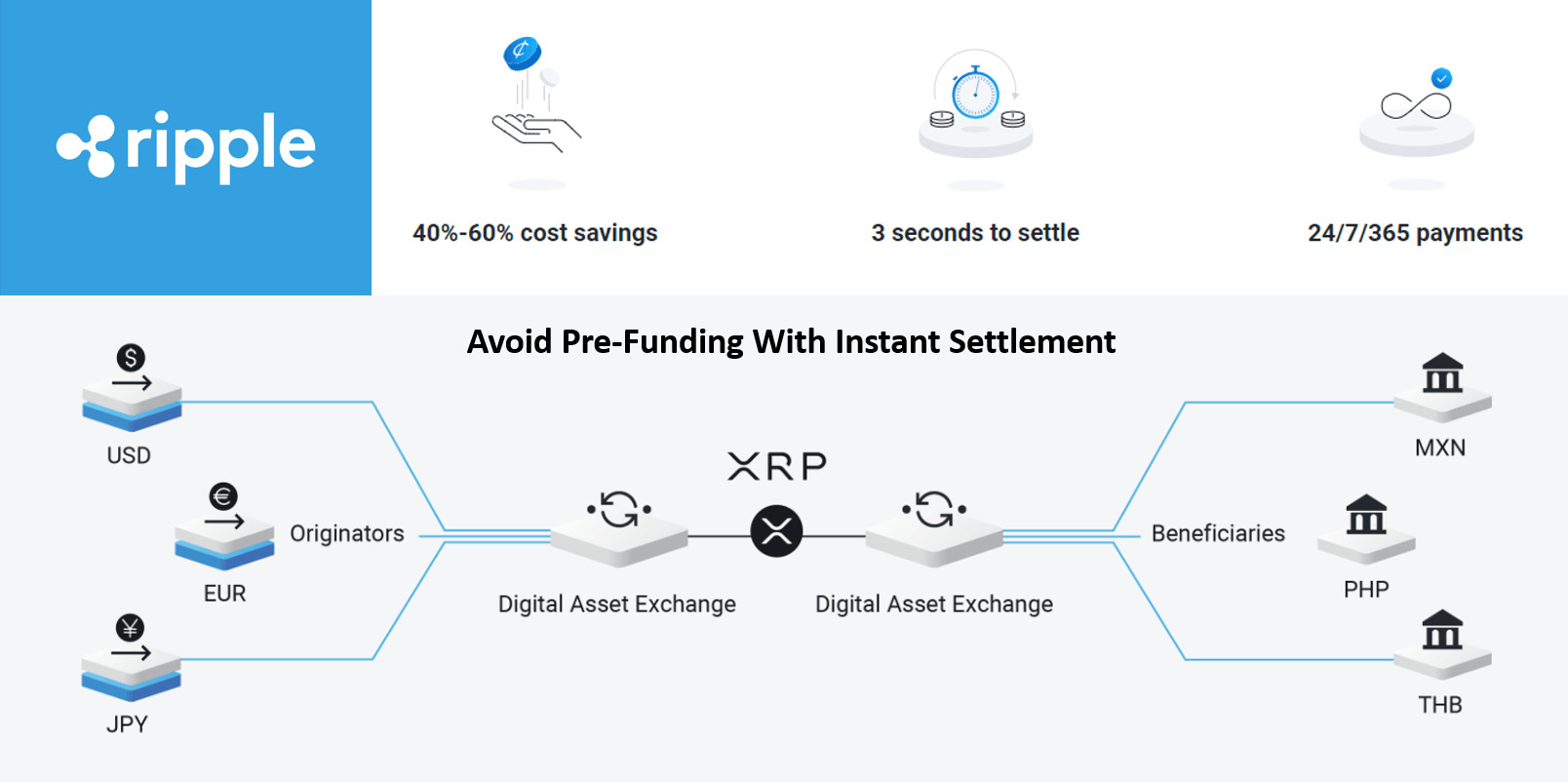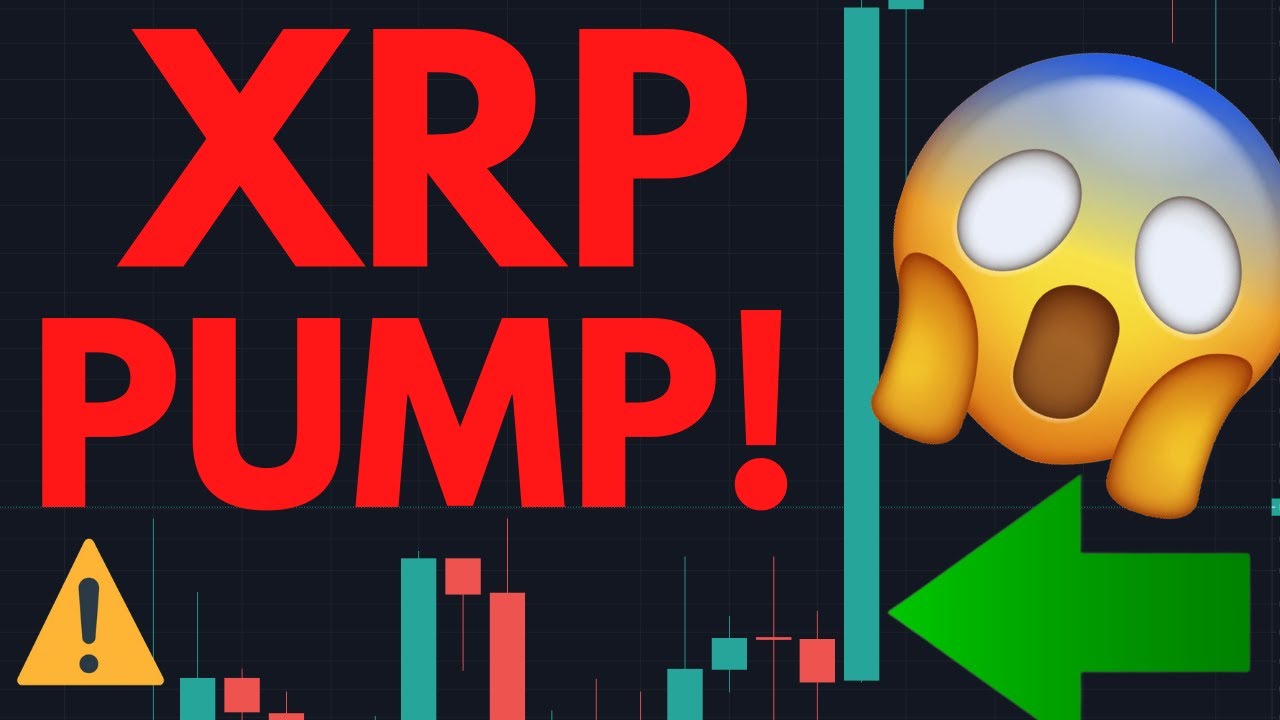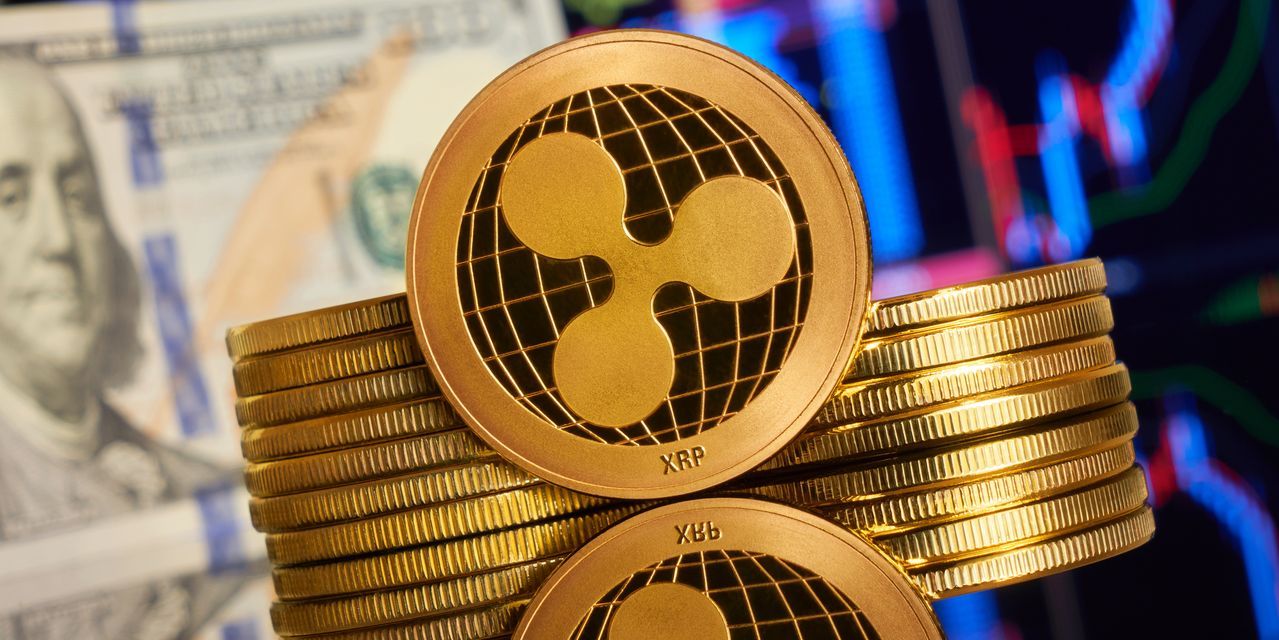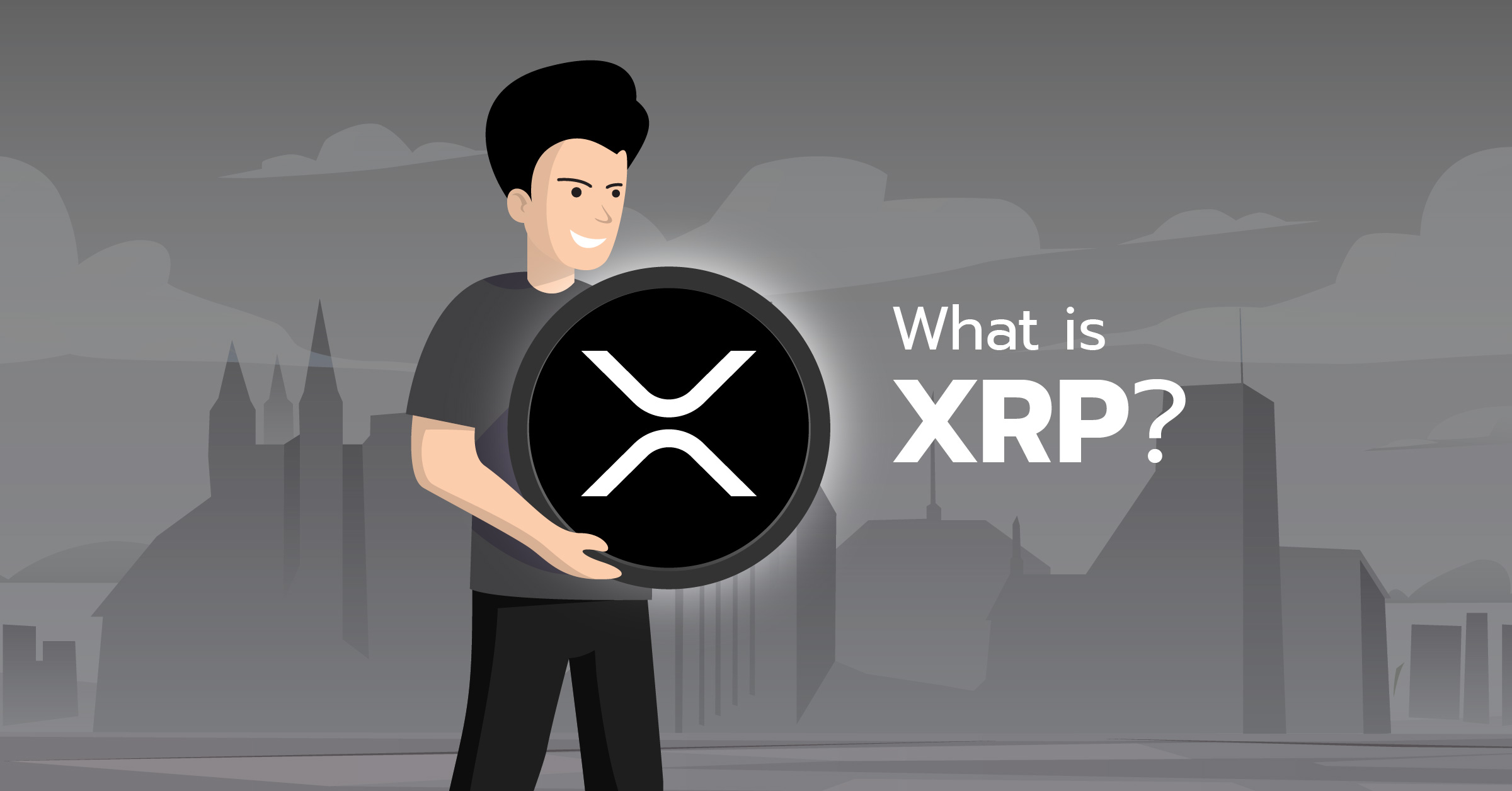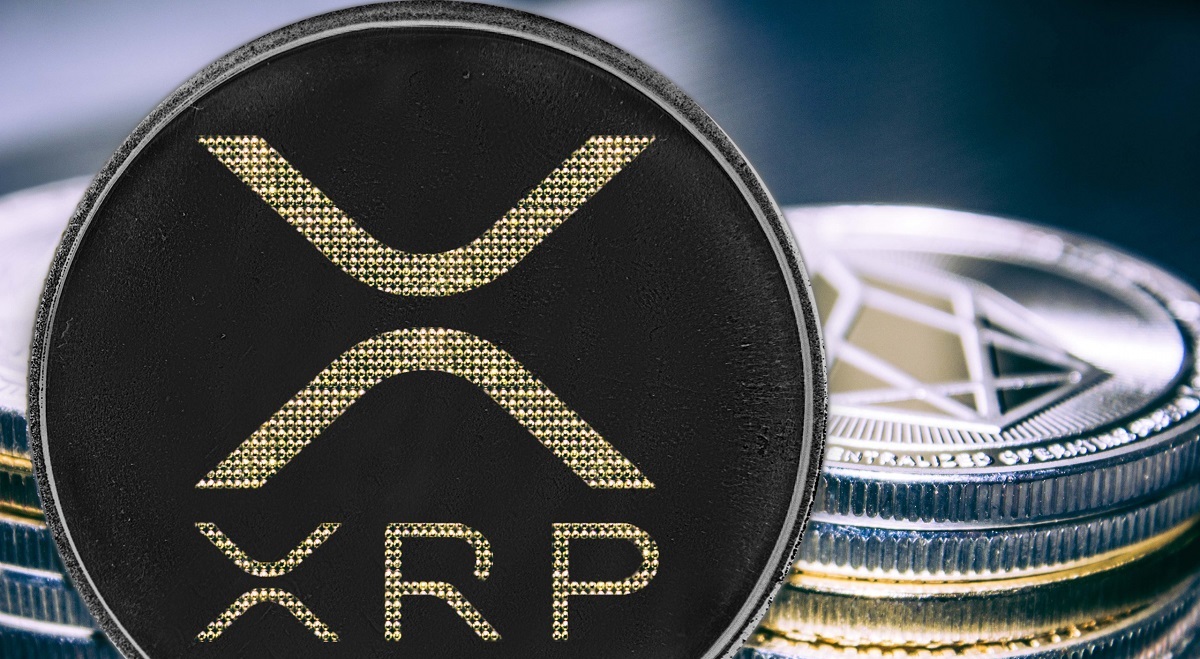Introduction
Ripple On-Demand Liquidity (ODL) has emerged as a revolutionary solution in the world of financial transactions, offering faster and more cost-effective cross-border payments compared to traditional methods. It leverages the power of blockchain technology and the digital asset XRP to facilitate instant liquidity for financial institutions and their customers.
Ripple ODL is gaining significant traction in the financial industry, with an increasing number of institutions adopting the technology to streamline their payment processes and reduce their reliance on legacy systems. This article will delve into what Ripple ODL is and how it is transforming the payments landscape.
Ripple ODL uses the RippleNet network, a global decentralized payment network, to connect financial institutions worldwide. It serves as a bridging mechanism by converting the sender’s currency into XRP, facilitating the transfer of funds across borders, and converting the XRP back into the receiver’s currency. This eliminates the need for traditional correspondent banking relationships and the associated delays and fees.
The primary goal of Ripple ODL is to enhance the efficiency and speed of cross-border payments. By leveraging the benefits of blockchain technology, transactions settle in a matter of seconds, compared to the standard settlement timeframe of days or even weeks with traditional methods. This not only improves the overall user experience but also decreases the risk and volatility associated with international transactions.
Ripple ODL also offers significant cost advantages over traditional remittance methods. Traditional methods involve multiple intermediaries and currency conversions, resulting in high transaction costs. In contrast, Ripple ODL simplifies the process by eliminating the intermediaries, reducing the number of required currency conversions, and minimizing fees. This makes it an attractive solution for businesses and individuals looking for cheaper and more efficient cross-border payments.
In the next sections, we will explore in detail how Ripple ODL works, the benefits it offers, as well as some of the use cases and challenges associated with this innovative technology.
What is Ripple ODL?
Ripple ODL, also known as Ripple On-Demand Liquidity, is a cross-border payment solution developed by Ripple, a blockchain technology company. It provides a seamless and efficient way for financial institutions to send money globally using the digital asset XRP as a bridge currency.
Ripple ODL enables real-time, low-cost international payment transfers by leveraging the speed and security of blockchain technology. It eliminates the need for pre-funded accounts in different currencies held by financial institutions, which is a common requirement in traditional correspondent banking networks.
With Ripple ODL, a financial institution can convert its local currency into XRP, send it across borders, and instantly convert it back into the local currency of the receiving institution. This process is facilitated through the use of RippleNet, a decentralized network that connects banks and payment providers worldwide.
The decentralized nature of RippleNet allows for direct transactions between parties without the need for intermediaries, making cross-border payments faster, cheaper, and more transparent. It also eliminates the need for manual reconciliation and reduces the risk of errors and delays associated with traditional payment systems.
One of the key features of Ripple ODL is its ability to provide on-demand liquidity. Traditionally, financial institutions had to pre-fund accounts in destination countries to facilitate international payments. This tied up capital and increased the liquidity risks for these institutions. With Ripple ODL, liquidity is instantly available on a pay-as-you-go basis, reducing the need for pre-funding and freeing up capital for other purposes.
Ripple ODL has gained significant traction in the financial industry, with many major banks and payment service providers adopting the technology. Its ability to provide fast, low-cost cross-border transactions has attracted institutions looking to streamline their payment processes and reduce costs.
In the next section, we will explore how Ripple ODL works and the technology behind it, providing a deeper understanding of its mechanics and benefits.
How does Ripple ODL work?
Ripple ODL utilizes a combination of blockchain technology and the digital asset XRP to facilitate fast and cost-effective cross-border payments. Let’s take a closer look at the key components and steps involved in the process:
- Sender’s Fiat Currency Conversion: The first step in the Ripple ODL process is the conversion of the sender’s fiat currency into XRP. This can be done by the sender’s financial institution using a digital asset exchange or a liquidity provider connected to the RippleNet network.
- XRP Transfer: Once the sender’s fiat currency is converted into XRP, the digital asset is transferred to the recipient’s financial institution. This transfer occurs via the XRP ledger, a decentralized blockchain network that facilitates fast and secure transactions.
- Recipient’s Fiat Currency Conversion: Upon receiving the XRP, the recipient’s financial institution converts it back into the local fiat currency. This conversion takes place using a digital asset exchange or a liquidity provider connected to the RippleNet network.
- Funds Disbursement: Finally, the recipient’s financial institution disburses the converted fiat currency to the intended recipient, completing the cross-border payment process.
It’s important to note that these steps occur seamlessly and rapidly, often settling transactions within a matter of seconds. This is made possible by the inherent speed and efficiency of blockchain technology and the liquidity provided by XRP.
Ripple ODL leverages the decentralized nature of the XRP ledger to eliminate the need for intermediaries typically involved in cross-border transactions. By removing the reliance on correspondent banking relationships, Ripple ODL reduces the number of steps and entities involved in the process, resulting in faster settlements and lower transaction costs.
Furthermore, the use of XRP as a bridge currency eliminates the need for pre-funded accounts and minimizes the risk associated with holding large amounts of fiat currency across multiple banking institutions. This not only reduces liquidity requirements but also reduces capital tied up in dormant accounts, allowing financial institutions to optimize their working capital and allocate resources more efficiently.
The secure and transparent nature of blockchain technology ensures that each transaction on the Ripple ODL network is recorded and verified, providing an immutable audit trail and enhanced visibility for all parties involved. This transparency helps to mitigate fraud and reduce errors, fostering trust among financial institutions and their customers.
In the following sections, we will explore the benefits and advantages that Ripple ODL offers over traditional cross-border payment methods, as well as some real-world use cases of this innovative technology.
Benefits of Ripple ODL
Ripple ODL provides a wide range of benefits to financial institutions, businesses, and individuals involved in cross-border transactions. Let’s explore some of the key advantages of utilizing Ripple ODL:
- Speed and Efficiency: One of the most significant benefits of Ripple ODL is its speed and efficiency. Transactions settled using Ripple ODL typically take a matter of seconds, compared to the delays of days or even weeks associated with traditional cross-border payment methods. This speed allows businesses and individuals to receive funds faster, enhancing liquidity and improving overall financial operations.
- Cost Savings: Ripple ODL offers cost savings in several ways. First, the elimination of intermediaries and the use of XRP as a bridge currency result in reduced transaction fees compared to traditional payment methods. Second, Ripple ODL eliminates the need for pre-funded accounts, reducing the associated costs of maintaining dormant accounts in multiple currencies. Lastly, the efficient and streamlined nature of Ripple ODL decreases administrative and operational costs, further contributing to overall cost savings.
- Liquidity Optimization: By providing on-demand liquidity, Ripple ODL allows financial institutions to optimize their capital and allocate resources more effectively. Instead of holding large amounts of foreign currency in correspondent bank accounts, financial institutions can instantly access liquidity through XRP, reducing the need for capital tied up in dormant accounts and improving working capital management.
- Transparency and Security: Ripple ODL leverages the transparency and security of blockchain technology. Each transaction is recorded and verified on the XRP ledger, providing an immutable audit trail and enhanced visibility. This transparency helps mitigate the risk of fraud, reduces errors and disputes, and fosters trust among all participants in the payment network.
- Global Reach: Ripple ODL enables financial institutions to extend their reach globally without the need for extensive correspondent banking relationships. Through the RippleNet network, institutions can connect with a wide range of international partners, expanding their payment capabilities and accessing new markets.
These benefits make Ripple ODL an attractive solution for financial institutions, particularly those involved in cross-border transactions. The speed, cost savings, liquidity optimization, transparency, and global reach provided by Ripple ODL can significantly improve the efficiency and profitability of international payment processes.
In the following sections, we will delve into the advantages of Ripple ODL over traditional cross-border payment methods and explore some real-world use cases where Ripple ODL has effectively disrupted the industry.
Advantages of Ripple ODL over traditional methods
Ripple ODL offers several distinct advantages over traditional cross-border payment methods. Let’s explore some of the key advantages that make Ripple ODL a compelling choice for financial institutions:
- Speed: Ripple ODL enables near-instantaneous settlement of cross-border payments. Traditional methods, such as correspondent banking, can involve multiple intermediaries and result in lengthy processing times ranging from several days to weeks. Ripple ODL leverages the efficiency of blockchain technology to settle transactions within seconds, allowing businesses and individuals to receive funds quickly.
- Cost Efficiency: Traditional cross-border payment methods often incur high fees due to the involvement of multiple intermediaries and currency conversion fees. Ripple ODL eliminates many of these intermediaries, streamlining the payment process and reducing associated costs. Additionally, the use of XRP as a bridge currency minimizes the need for traditional currency conversions, further reducing fees and providing cost savings to financial institutions and their customers.
- Liquidity Optimization: With traditional methods, financial institutions are required to hold pre-funded accounts in various currencies to facilitate cross-border settlements. This ties up capital and increases liquidity risks. Ripple ODL offers on-demand liquidity, allowing financial institutions to instantly convert and settle transactions using XRP. This eliminates the need for maintaining multiple pre-funded accounts and enables better capital optimization.
- Transparency: The transparent nature of blockchain technology ensures visibility and accountability in every transaction conducted through Ripple ODL. Each transaction is recorded and verified on the XRP ledger, providing an auditable and immutable record of all activities. This transparency reduces the risks of fraud, enhances trust among participants, and facilitates compliance with regulatory requirements.
- Global Accessibility: Traditional cross-border payment systems often have limitations in terms of the countries and currencies they support. Ripple ODL removes many of these barriers by providing a decentralized payment network. Financial institutions connected to RippleNet can access a global network of partners, enabling them to facilitate payments to a wide range of destinations and currencies.
These advantages of Ripple ODL over traditional methods contribute to improved efficiency, cost savings, and enhanced capabilities for financial institutions and businesses engaged in cross-border transactions. By leveraging the speed, cost efficiency, liquidity optimization, transparency, and global accessibility offered by Ripple ODL, institutions can streamline their payment processes, reduce costs, and provide faster and more reliable services to their customers.
In the following sections, we will explore some real-world use cases of Ripple ODL and examine how this innovative technology is being applied in various industries to transform cross-border payments.
Use cases of Ripple ODL
Ripple ODL has proven to be a versatile and effective solution for various industries and use cases. Let’s explore some real-world applications where Ripple ODL has made a significant impact:
- Remittances: Cross-border remittances, where individuals send money to their families or friends in other countries, can be costly and time-consuming. Ripple ODL enables instant and low-cost remittances by eliminating the need for multiple intermediaries and reducing transaction fees. Financial institutions leveraging Ripple ODL can provide a faster and more affordable remittance service, improving the financial well-being of individuals and families across the globe.
- Corporate Payments: Many businesses rely on cross-border payments for various purposes, such as supplier payments, payroll, and international expansion. Ripple ODL offers businesses quicker settlement times, cost savings, and enhanced visibility into payment flows. By utilizing Ripple ODL, companies can optimize their payment processes, reduce currency exchange costs, and improve cash flow management.
- E-commerce: Cross-border e-commerce transactions often involve multiple currencies and payment processors, leading to complexity and high fees. Ripple ODL simplifies the process by allowing merchants to accept payments in various currencies, instantly converting them to the desired currency using XRP. This enables faster and more seamless cross-border transactions for e-commerce platforms, improving the customer experience and expanding market reach.
- Financial Institutions: Ripple ODL is particularly beneficial for financial institutions such as banks and payment service providers. It allows these institutions to enhance their payment capabilities, offer competitive cross-border services, and access new market opportunities. Ripple ODL’s speed, efficiency, and cost savings make it an attractive solution for financial institutions striving to provide superior customer experiences and stay ahead in a rapidly evolving financial landscape.
- Lending and Trade Financing: Ripple ODL can streamline lending and trade financing processes by enabling faster and more secure cross-border payments. Financial institutions can use Ripple ODL to facilitate the transfer of funds for loan disbursements, trade financing, and supply chain payments. The efficiency and transparency provided by Ripple ODL enhance trust between parties involved in these transactions, reducing risks and improving the overall efficiency of lending and trade finance operations.
These use cases demonstrate the versatility and value of Ripple ODL across various industries. By leveraging the technology and benefits of Ripple ODL, businesses, individuals, and financial institutions can transform their cross-border payment processes, increase efficiency, reduce costs, and improve financial access for individuals and businesses worldwide.
In the next section, we will explore the relationship between Ripple ODL and the digital asset XRP, highlighting the role of XRP in facilitating seamless cross-border transactions.
Ripple ODL and XRP
Ripple ODL and XRP are closely intertwined in facilitating fast and efficient cross-border payments. XRP is the digital asset used as a bridge currency in Ripple ODL transactions. Let’s explore the relationship between Ripple ODL and XRP in more detail:
XRP plays a crucial role in Ripple’s vision of revolutionizing the global payments industry. It serves as a liquidity tool for financial institutions, allowing them to facilitate instant and low-cost transactions across borders. When using Ripple ODL, a financial institution converts its local fiat currency into XRP, which is then moved across borders as a bridge currency. The recipient’s financial institution then converts XRP back into the local fiat currency, enabling seamless and efficient cross-border payments.
By utilizing XRP as a bridge currency, Ripple ODL eliminates the need for traditional correspondent banking relationships and pre-funded accounts in multiple currencies. This reduces the complexity and costs associated with cross-border transactions, providing significant benefits to financial institutions.
One of the key advantages of using XRP in Ripple ODL is its remarkable speed. XRP transactions settle in a matter of seconds, allowing for rapid cross-border transfers compared to traditional methods that may take days to complete. This speed is made possible by the decentralized nature of the XRP ledger and the consensus algorithm used to validate transactions on the network.
Additionally, XRP’s stability and liquidity make it an ideal bridge currency for cross-border transactions. Its status as a digital asset enables efficient and cost-effective conversion from one fiat currency to another, reducing the need for multiple currency conversions and minimizing associated fees. By leveraging XRP’s liquidity, financial institutions can achieve instant liquidity on a pay-as-you-go basis without the need for significant capital tied up in pre-funded accounts.
It’s important to note that Ripple, the company behind Ripple ODL, holds a significant amount of XRP. This allows Ripple to provide liquidity to institutions using Ripple ODL, especially in new corridors or where liquidity might be limited. The availability of liquidity plays a pivotal role in the success and adoption of Ripple ODL.
Ripple’s use of XRP as a bridge currency has garnered attention in the financial industry and has positioned XRP as one of the top digital assets in market capitalization. While Ripple ODL is just one use case for the broader XRP ecosystem, the technology and benefits it provides have the potential to drive further adoption of XRP in various financial applications.
In the following section, we will discuss the criticisms and challenges faced by Ripple ODL, shedding light on areas that require further consideration and improvement.
Criticisms and Challenges Faced by Ripple ODL
While Ripple ODL has gained significant attention and adoption in the financial industry, it is not without its criticisms and challenges. Let’s discuss some of the notable criticisms and challenges faced by Ripple ODL:
- Regulatory Uncertainty: The regulatory landscape surrounding cryptocurrencies and blockchain technology is evolving and can vary significantly from country to country. This regulatory uncertainty can pose challenges for Ripple ODL’s widespread adoption, as financial institutions and businesses may have concerns about compliance and potential legal issues.
- Limited Adoption: While Ripple ODL has gained notable partnerships and adoption in certain regions, its global reach is still relatively limited. Some financial institutions and payment providers may be hesitant to adopt Ripple ODL due to concerns about interoperability, liquidity in certain corridors, or the need for additional infrastructure development.
- Dependency on XRP: The reliance on the digital asset XRP as a bridge currency can be a double-edged sword. While XRP provides liquidity and transaction speed benefits, any issues or controversies surrounding XRP can impact the perception and adoption of Ripple ODL. It also introduces exposure to volatility in the cryptocurrency market.
- Competitive Landscape: Ripple ODL competes in a crowded space of cross-border payment solutions, with established players and new entrants alike. Traditional banking systems and other fintech companies are also developing their own innovative solutions, potentially offering competitive alternatives to Ripple ODL.
- Transparency Concerns: While the transparency of blockchain technology is often seen as a benefit, there are concerns about the privacy and confidentiality of transaction details in a public blockchain network. Financial institutions and their customers may have reservations about revealing sensitive transaction information on a public ledger.
Ripple and the RippleNet network are actively working to address these criticisms and challenges to foster wider adoption of Ripple ODL. They are engaging with regulators, financial institutions, and industry stakeholders to provide clarity and promote regulatory compliance. Efforts are also underway to expand the network’s reach, improve interoperability, and enhance the overall user experience.
It’s important to note that the criticisms and challenges faced by Ripple ODL are not unique to this technology but are common in the rapidly evolving landscape of cryptocurrencies and blockchain-based solutions. As the industry continues to mature and regulatory frameworks become clearer, Ripple ODL has the potential to become a more widely accepted and utilized cross-border payment solution.
In the concluding section, we will recap the key points discussed in this article and emphasize the impact of Ripple ODL on the world of cross-border payments.
Conclusion
Ripple On-Demand Liquidity (ODL) has emerged as a transformative solution in the realm of cross-border payments, leveraging blockchain technology and the digital asset XRP to offer faster, more cost-effective, and efficient transactions. By eliminating intermediaries, reducing fees, and providing on-demand liquidity, Ripple ODL has the potential to revolutionize the global payments landscape.
During our exploration of Ripple ODL, we’ve discussed its remarkable speed and efficiency, cost savings, liquidity optimization, transparency, and global accessibility. These benefits make Ripple ODL an attractive choice for financial institutions, businesses, and individuals engaged in cross-border transactions.
We’ve also examined the advantages of Ripple ODL over traditional methods, including its speed, cost efficiency, liquidity optimization, transparency, and global reach. By leveraging these advantages, Ripple ODL streamlines payment processes, reduces costs, and improves overall efficiency in the cross-border payment space.
Additionally, we’ve explored some real-world use cases of Ripple ODL, such as remittances, corporate payments, e-commerce, financial institutions, and lending and trade financing. These use cases demonstrate the versatility and value of Ripple ODL across various industries and its potential to transform cross-border payments in diverse ways.
It’s important to acknowledge the criticisms and challenges faced by Ripple ODL, such as regulatory uncertainty, limited adoption, dependency on XRP, competition, and transparency concerns. However, Ripple and the RippleNet network are actively working to address these challenges and drive wider adoption of Ripple ODL.
In conclusion, Ripple ODL has the potential to disrupt and improve cross-border payments by offering speed, cost efficiency, liquidity optimization, transparency, and global accessibility. As the financial industry continues to evolve, Ripple ODL’s innovative approach and utilization of blockchain technology position it as a compelling solution for the future of cross-border transactions.







